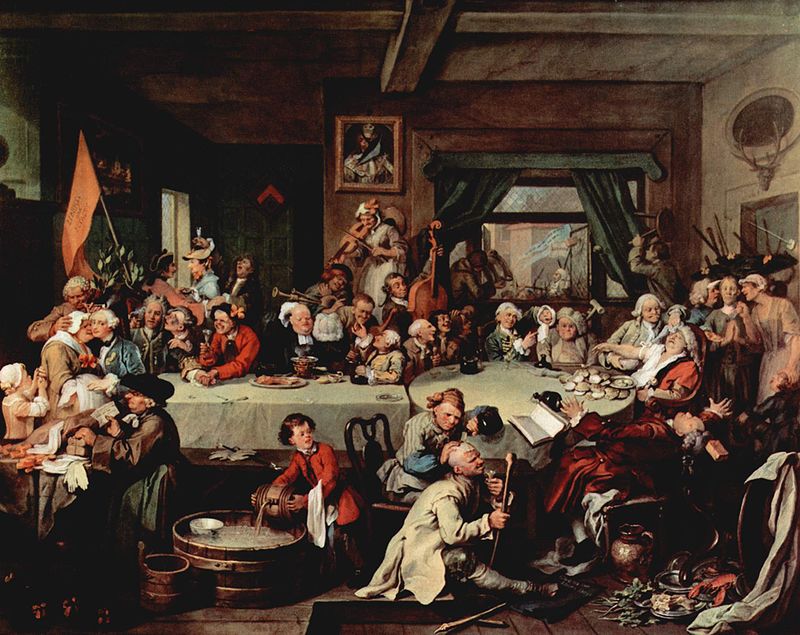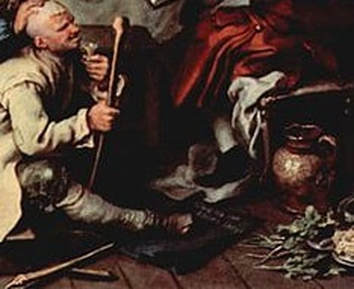1752: A Very Odd Year Alan Payne January 2019
The year 1752 was like no other in the history of England, when one quarter of the whole population had two birthdays in a
12-month period and for years afterwards all events had to be recorded with two different dates. There were in fact two separate and individual changes incorporated in the Calendar (New Style) Act of 1750.
Different New Year
We are used to the idea of Chinese New Year being in January or February. We accept that recently 27 January was the year of the monkey and it was followed afterwards by the year of the rooster. But it seems confusing to say that the day 27 January 2016 was followed the very next day by 28 January 2017. That was similar to the system used throughout England for centuries, when the start of the year was 25 March. Lady Day, one of the most important religious Quarter Days in England celebrating the Feast of the Annunciation, was on 25 March, marking the new year, and other quarter days followed: Midsummer's Day 24 June; Michaelmas Day 29 September; and Christmas Day 25 December.
This continued until 1752 when the New Year was changed to the present, civil date of 1 January. As a result the year 1751 was only 9 months long and anyone with a birthday between 1 January and 24 March 1751 found that they had two birthdays within a 12-month period.
12-month period and for years afterwards all events had to be recorded with two different dates. There were in fact two separate and individual changes incorporated in the Calendar (New Style) Act of 1750.
Different New Year
We are used to the idea of Chinese New Year being in January or February. We accept that recently 27 January was the year of the monkey and it was followed afterwards by the year of the rooster. But it seems confusing to say that the day 27 January 2016 was followed the very next day by 28 January 2017. That was similar to the system used throughout England for centuries, when the start of the year was 25 March. Lady Day, one of the most important religious Quarter Days in England celebrating the Feast of the Annunciation, was on 25 March, marking the new year, and other quarter days followed: Midsummer's Day 24 June; Michaelmas Day 29 September; and Christmas Day 25 December.
This continued until 1752 when the New Year was changed to the present, civil date of 1 January. As a result the year 1751 was only 9 months long and anyone with a birthday between 1 January and 24 March 1751 found that they had two birthdays within a 12-month period.
|
Loss of Eleven Days
This wasn't the only change in that year as a completely different issue arose which caused the loss of a further eleven days. In the black placard of our headline picture, under the man's foot (enlarged right), are the words Give us our Eleven Days commemorating that Wednesday 2 September 1752 was followed by Thursday 14 September 1752. The year was only 354 days long and people with a birthday between these dates avoided aging by a year. This change is often referred to as the introduction of the Gregorian Calendar to replace the old Julian version. |
The Calendar (New Style) Act of 1750 was needed to correct the number of Leap Years needed to get a more precise measurement of a year as 365 days 5 hours 49 minutes 12 seconds, rather than the previously used 365 days 6 hours. Over the centuries the reduction of 10 minutes 48 seconds per year had added up to 11 days. The importance to the Church was the need to establish the date of Easter which had drifted away from the spring equinox. Because the Church of England was so opposed to Popery, it made up its own rules for calculating Easter based on a Golden Number defined as Easter-day is always the first Sunday after the Full Moon, which happens upon, or next after the Twenty-first Day of March. And if the Full Moon happens upon a Sunday, Easter-day is the Sunday after.[1]
Dual Dates
Immediately after the changes people used both old and new style dates to determine exactly when national events happened, such as Acts of Parliament, and when local transactions were made, such as the payment of rent and the dates of sale of property. It wasn't just academic, no-one wanted to pay their rent twice.
There was a precedent for managing the change as there had been much confusion when Roman Catholic countries altered their calendars to the Gregorian system in 1582. When an event was of international importance, it caused issues in Britain. The execution of Charles I is a classic example of the confusion, sometimes recorded as 30 January 1648 (Old Style when it happened) but known on the continent as 30 January 1649 (New Style). Contemporary paintings of the execution usually call the date 30 January 1648/9.
The Box parish clerk was clearly so confused after 1752 that he went back in his records to confirm earlier dates of births, deaths and marriages. Headings were put in some entries to confirm when the old system was being used (for example 1661) but some dates were amended to indicate that the revised date was based on the new system (such as 1661/62).
It makes a mockery of all those important British dates that we learned at school - do you still think the Battle of Hastings was on 14 October 1066? For Americans this is most important. When George Washington was born, he thought his birthday was
11 February 1731 but, using the present-day calendar, we usually call the date 22 February. It's all relative, don't you know! But please spare a thought for contemporaries who had to deal with dates in 1752, which was 72 days shorter than a normal year.
Dual Dates
Immediately after the changes people used both old and new style dates to determine exactly when national events happened, such as Acts of Parliament, and when local transactions were made, such as the payment of rent and the dates of sale of property. It wasn't just academic, no-one wanted to pay their rent twice.
There was a precedent for managing the change as there had been much confusion when Roman Catholic countries altered their calendars to the Gregorian system in 1582. When an event was of international importance, it caused issues in Britain. The execution of Charles I is a classic example of the confusion, sometimes recorded as 30 January 1648 (Old Style when it happened) but known on the continent as 30 January 1649 (New Style). Contemporary paintings of the execution usually call the date 30 January 1648/9.
The Box parish clerk was clearly so confused after 1752 that he went back in his records to confirm earlier dates of births, deaths and marriages. Headings were put in some entries to confirm when the old system was being used (for example 1661) but some dates were amended to indicate that the revised date was based on the new system (such as 1661/62).
It makes a mockery of all those important British dates that we learned at school - do you still think the Battle of Hastings was on 14 October 1066? For Americans this is most important. When George Washington was born, he thought his birthday was
11 February 1731 but, using the present-day calendar, we usually call the date 22 February. It's all relative, don't you know! But please spare a thought for contemporaries who had to deal with dates in 1752, which was 72 days shorter than a normal year.
Reference
[1] The Book of Common Prayer
[1] The Book of Common Prayer

